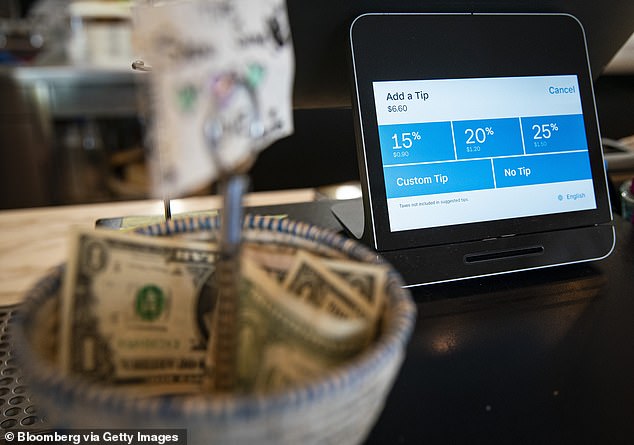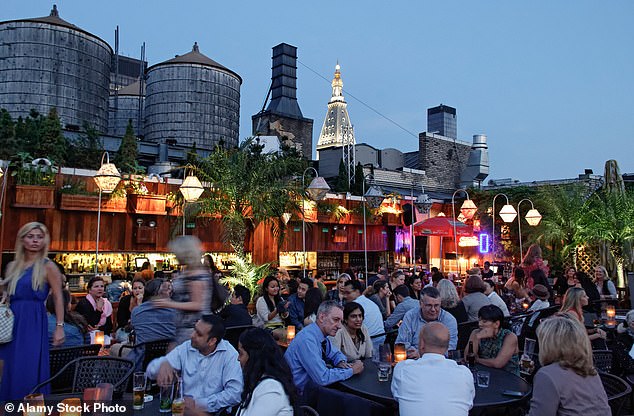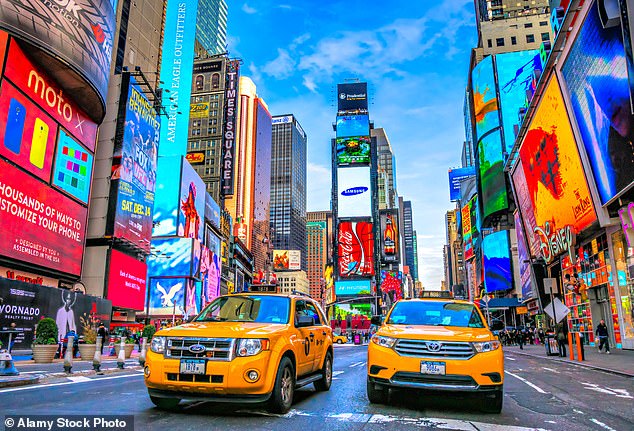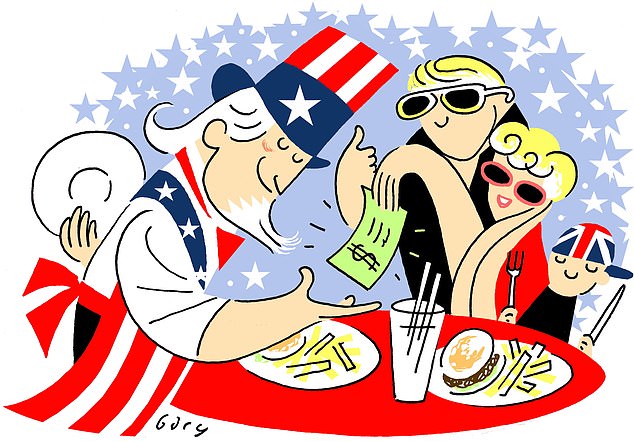Table of Contents
To tip or not to tip? Unfortunately, that’s not the question when visiting the United States.
Because, on the other side of the Atlantic, it’s simply a question of how much to let go.
What makes it worse is that it’s now common to have a card reader in front of your nose asking you if you want to add 10 percent, 20 percent, 25 percent or even 30 percent after almost any purchase.
Not only to eat in a restaurant, but also to have a coffee at a kiosk, have a drink at a bar or sometimes (surprisingly), at self-service counters and convenience stores.
Even Americans consider it excessive and have coined a word for the widespread tipping culture: “tipflation.”
US-based tipping expert Diane Gottsman’s rule of thumb is to not be overtly British and, when in doubt, simply ask about the usual procedure.
And a recent survey by LendingTree, an online financial company, revealed that about 60 percent of people in the United States were tipping more than ever. So, as locals struggle to deal with the phenomenon, what should we do when crossing the pond?
US-based tipping expert Diane Gottsman’s rule of thumb is to not be overtly British and, when in doubt, simply ask about the usual procedure. She also recommends avoiding card machine add-ons and instead tipping with cash.
A lot depends on where you go: Expect to tip more in New York or Los Angeles than, say, St. Louis, Missouri, or rural Oklahoma. Here is our guide:
RESTAURANTS: SHOOT THE DOUGH
When Jayden or Lily-Anne flash a pearly white smile and introduce themselves with a friendly gesture, it can be overwhelming to the uninitiated British visitor. Why are they so charming? Doesn’t that sound too familiar? Can they really be that nice all the time?
The answer is yes. And the reason is simple: they need to make a good impression to encourage you to leave a tip to supplement what may be meager wages. The minimum wage in the United States is $7.25 (£5.67). However, for positions where employees receive tips, this is only $2.13 (£1.66), although it varies from state to state.
Of course, not everyone has this low rate, but it gives an idea of what salaries can be like.
So tip at least 15 to 20 percent, or more if the service is especially good. If you don’t, expect to be chased down the street.
CARRIERS: BAGGING THE DOLLARS

It is important to tip the correct percentage in the US, whether in a restaurant or a bar.
It’s that awkward moment, if you don’t tip big, when the bellboy/doorman asks, ‘Can I help you with your bags?’
The unspoken etiquette is that if you answer “yes,” then you’re due a tip, and by the time you get to your room, you may have already shelled out $15.
The general rule is to tip $5 to the porter who carries your bags from the street to the front desk, and another $5-10 to the bellboy who takes your bags to your room, especially if you have more than a couple of suitcases.
Remember, however, that there is no obligation to do so and that many Americans these days carry their own suitcases to avoid tipping. Be sure to change currency to small denominations before traveling; Many fives and one dollar bills are essential for your trip.
JANITORS: JUST SAY ‘THANK YOU’
It is not necessary to tip the concierge if he or she has simply given you directions to the nearest pharmacy or coffee shop.
However, for theater tickets or restaurant reservations, the going rate is $5 to $20, depending on how complicated the reservation is, and don’t be stingy (they’ll remember you next time you ask for help with something).
HOTELS: TO LEAVE DOLLARS OR NOT?
Gives $3 to $5 per room per night. But don’t do it all at once at the end of your stay. The reason for this is that housewives often change from day to day.
So tip every day, even if you’re not in the UK. “Housekeepers make an hourly wage, but they do hard work, so a tip is a nice gesture,” says Gottsman.
BARS: DOUBLE SIZES

In the US, you should expect to tip the bartender at least $1 for a standard drink. For cocktails, you may want to pay more.
It may go against the grain (it is not the norm in our country), but in the United States it is common to shell out $1 per drink. This is an absolute minimum in an ordinary bar.
At a fancy cocktail bar, you may want to double it or even pay more, especially if you expect to be served quickly next time.
If you have opened an account, a tip of 15 to 20 percent of the bill is standard.
Meanwhile, if you eat at the bar, tip the waiter like you would a waiter at a restaurant: 15 to 20 percent.
HOT DRINKS: COUGH
When purchasing a coffee or tea to go, you may be asked if you would like to add up to 20 percent tip at the card reader.
Outrageous! Don’t be ashamed to turn it down, even if there are people queuing behind you.
The difference between this situation and that of a bar is that these employees must be paid a reasonable hourly wage, although some people tip $1 for a latte in cities like New York.
TAXIS: DRIVING A DIFFICULT BARGAIN

Taxi drivers must tip at least 15 percent of the fare (same for Ubers)
Tip in cash, 15 to 20 percent is typical in standard taxis (another reason to make sure you have a pocket full of smaller bills). Check the boxes for tips on using apps like Uber and Lyft.
CONCLUSIONS: IT DEPENDS ON YOU
When picking up takeout, a tip is not required, strictly speaking, and will seem extremely strange to most of us here.
However, there, if the waiter bagged your order, added utensils, or brought the food to your car, then a tip is a nice gesture: maybe a dollar or two. Let’s hope it doesn’t become fashionable here.
BREAKFASTS: BUFFET ETIQUETTE
During serve-yourself breakfasts (or at any buffet), tip $1 to $2 to attendants who fill water glasses or clean dishes.
TOUR GUIDES: SPREAD THE DOLLARS
On short walking tours of less than two hours, tip between $5 and $10 per tour guide. For tours of up to six hours, the tip should be at least $10 to $20, or more if it was especially good. These guys really rely on your advice to make a living.
SALONS: PAY TO BE PAMPERED
Some lounges do not allow tips. Others may include it on the invoice. If a salon allows it and it’s not already included, tip 15 to 20 percent.
WHEN IS A TIP NOT CLASSIFIED AS A TIP?
When it is a ‘fee/service charge’. In both bars and restaurants, a “service fee/charge” may be added to your bill. While this may seem like a tip to the waiter, it is not.
The fee/charge goes towards the salaries of front of house staff, kitchen workers and managers. So tip the waiter as usual (see above).

